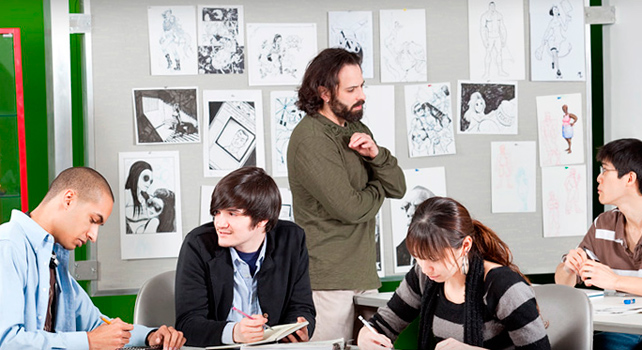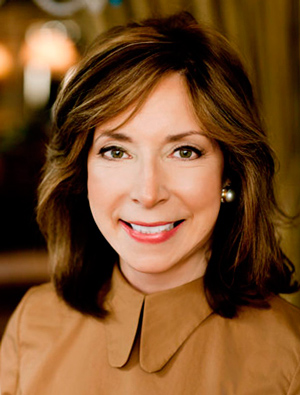The former kindergarten teacher cofounded the Savannah College of Art & Design and serves as its president. She's preparing students for creative careers by teaching collaboration and the art of ambiguity.

Since becoming president of the Savannah College of Art and Design, Paula Wallace has doubled enrollment from less than 5,000 students to more than 10,000, established an online learning program, and built new campuses in Atlanta, Hong Kong, and Lacoste, France. Under her watch, SCAD has received numerous honors including being named by Kaplan as one of "25 cutting-edge schools with an eye toward the future.” Exactly what that future holds, no one knows for sure. But Wallace says that SCAD grads are better prepared than most to adapt and thrive.
 FAST COMPANY: You cofounded SCAD in 1978. Before that you were a kindergarten teacher--has that been a useful background?
FAST COMPANY: You cofounded SCAD in 1978. Before that you were a kindergarten teacher--has that been a useful background?
PAULA WALLACE: I wouldn’t necessarily recommend that every college president first teach kindergarten, but I did. I started teaching elementary school at the base of the pyramid, and that honed my ideas about caring for students and being accountable to parents. In higher education today, there is a lot of talk about assessment for student learning and teaching and measuring performance outcomes. That’s something I’ve been thinking about for a long time.
You’ve also worked as an interior designer, written books on interior design, founded the Savannah Film Festival--how do those other activities inform your thinking about the curriculum at SCAD?
I think it’s important to learn respect for all the different disciplines. Writers don’t just work with writers. At SCAD, a graphic designer might work with an industrial designer or a sound designer on a project. Showing respect for different disciplines is something that makes our graduates very appealing to employers.
About Generation Flux Pioneers of the new (and chaotic) frontier of business Flagship Fluxers, Photo: Brooke Nipar
Flagship Fluxers, Photo: Brooke Nipar
In our February 2012 issue Fast Company Editor Robert Safian identified a diverse set of innovators who embrace instability, tolerate--and even enjoy--recalibrating careers, business models, and assumptions. People like author/Onion digital media maverick Baratunde Thurston, Greylock Data Scientist DJ Patil, Microsoft Senior Researcher danah boyd, and GE's Beth Comstock. This series continues to explore the new values of GenFlux. Find more Fluxers here. And tweet your contributions using #GenFlux.
What are the major career challenges facing art and design graduates getting out of school now?
There is a big need to tolerate ambiguity today, and that can be uncomfortable. If you’re not already good at it, you need to be. Often, the answers are not self-evident; one semi-question leads to another question.
How does SCAD equip students to deal with that ambiguity?
I believe in the classical ideals of a liberal arts education. Reading, speaking, writing--those are essential in any career. So is supporting the work of others. The classroom critique process, which is a tradition in art and design schools, encourages that. You have to stand up and present your work to your peers and they can question your assumptions and solutions, which may lead you to reconfigure your solutions. I think the critique model strengthens students’ ability to be successful in the professional arena.
Also, we have a huge art history faculty, and every student gets an abundant background in art history. Our students are links in a chain—they need to know what’s come before to be a strong link, to understand what’s stood the test of time. Art is not just about the wrist down—it’s having confidence in your conceptual ability, too. Engaging with the concepts is key.
Another key element of SCAD is our focus on technology. We got ahead of the curve on embracing technology and how it can help artists to fulfill their visions and do their work. Now it’s part of everything. We even have looms for weaving—a really ancient technology—that are connected to computers.
But you’re different from a liberal arts school because you’re also training students for very specific careers.
Right. We have the core learning, but you can specialize in one area, or combine specializations into your own course of study. We still have the same majors we had when we started, but we’ve added to them. We now have 104 different degree programs for undergrads and grad students, including tracks such as visual effects and sound design. It’s become more specialized, yet more collaborative over time, and that has strengthened overall preparation for our students.
Students at SCAD are also encouraged to think about the business of art and design while they’re in school, right?
We do a lot of collaborative work with businesses. This concept started with sponsored projects in the Gulfstream Center for Design, which houses our industrial design department. Now it’s more wide-ranging and spread across the entire university. Design thinking is critical to business success--businesses want students’ blue-skying, their new ideas. Students don’t know that something can’t happen.
Recently we established the Collaborative Learning Center, the whole point of which is to allow companies to come in and pose problems, and the CLC puts together teams of students and faculty to work on them. In the past, students have worked on projects sponsored by companies like Coca-Cola, Chick-fil-A, Dell, Disney, and American Greetings. We have about 41 sponsored projects this academic year. In the fashion department, we have the Style Lab mentorship program, where well-known, established designers will come and be mentors. Participating in these programs isn’t a requirement, but I look at this as part of fulfilling our mission to prepare talented students for careers, and helping them build networks and partnerships.
There’s been a lot of discussion in the last several years about the real value of expensive private universities—are SCAD graduates successful at actually finding work after school?
Well, we have a 3.4 percent default rate on student loans according to the federal government; the national average is about 8.8 percent for four-year colleges and universities in general.
Since you became president of SCAD, the school has opened two campuses abroad, in Hong Kong and France. Is it important for students to have a global perspective?
I do. I think it’s about respect. There’s an arrogance if one hasn’t considered different cultures. The opportunity for students from the U.S. to study at the other campuses—continuing on a career path with the challenge of every-changing environments—helps them become more versatile. And when they come back from a semester Lacoste or Hong Kong, you can see they’ve filled journals with idea they wouldn’t have had if they stayed in one place.
Do you think art and design students are more comfortable than other young people with the idea of a less straightforward career path?
Serial careers are something they expect. Here in the South, we just love storytelling, and this is all part of creating a story. It’s going to have a beginning, a middle, and end, and lots of things that happen, lots of plotlines. Students pick up on that naturally--they expect to tell a story in their lives. I counsel them not to be too rigid in their expectations.